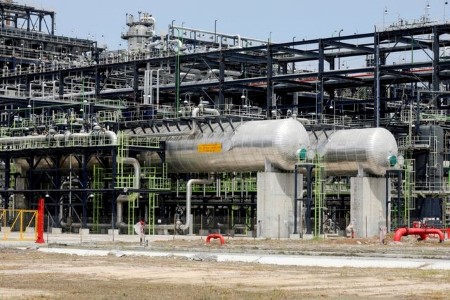




Inflation Update: Green light for easing
 DOWNLOAD
DOWNLOAD

December Economic Update: One for them, one for us
 DOWNLOAD
DOWNLOAD

Philippines Trade Update: Trade trajectories trend along
 DOWNLOAD
DOWNLOAD


Brent settles above USD 90 for first time since October on geopolitical tension

April 4 – Oil prices extended gains on Thursday, settling up more than USD 1 as geopolitical tensions and output cuts outweighed caution about US Federal Reserve rate cuts.
Brent futures for June rose above USD 91 a barrel before settling up USD 1.30, or 1.5%, to USD 90.65. US West Texas Intermediate (WTI) futures for May settled up USD 1.16, or 1.4% to USD 86.59 a barrel.
Both contracts closed on Thursday at their highest levels since October and continued to climb after the session ended, having received support in recent days from heightened geopolitical tensions and potential supply risks.
Oil rose on Thursday following news reports that Israeli embassies across the world have been placed on high alert due to increasing threats of an Iranian attack on Israeli diplomats.
Iran, the third-largest producer in OPEC, has vowed revenge against Israel for an attack on Monday that killed high-ranking Iranian military personnel. Israel has not claimed responsibility for the attack on Iran’s embassy compound in Syria.
In a sharp shift in tone, Washington issued its strongest public rebuke toward Israel on Thursday since the start of its war with Hamas, warning that US policy on Gaza will be determined by whether Israel takes steps to address the safety of Palestinian civilians and aid workers.
The United States on Thursday imposed new Iran-related counter-terrorism sanctions against Oceanlink Maritime DMCC and its vessels, citing its role in shipping commodities on behalf of the Iranian military.
The United States is using financial sanctions to isolate Iran to disrupt its ability to fund its proxy groups and hamper the country’s support for Russia’s war in Ukraine, the Treasury Department said.
Prices were also supported after US Secretary of State Antony Blinken said that Ukraine will eventually join NATO as support for the country remains “rock solid” among member states.
Oil’s recent gains have also followed Ukrainian attacks on Russian refineries that cut fuel supply and news that Mexico’s state energy company Pemex requested its trading unit to cancel up to 436,000 barrels per day of crude exports this month as it prepares to process domestic oil at the new Dos Bocas refinery.
“All of these geopolitical factors happened at once, driving bullish sentiment and ultimately some profit taking,” said Frank Monkham, senior portfolio manager at Altimo LLC.
A meeting of top ministers from the Organization of the Petroleum Exporting Countries and its allies (OPEC+) including Russia, kept oil supply policy unchanged on Wednesday and pressed some countries to boost compliance with output cuts.
The group said some members would compensate for oversupply in the first quarter. It also said Russia would switch to output rather than export curbs.
Investors will look to economic data and monetary policy for potential clues on the outlook for oil demand.
US unemployment claims increased more than expected in the last week, according to Labor Department statistics, as labor market conditions gradually ease.
That came after Federal Reserve Chair Jerome Powell expressed caution on Wednesday about the timing of future interest rate cuts, after recent data has showed higher-than-expected job growth and inflation.
March’s employment report on Friday is likely to show nonfarm payrolls increased by 200,000 jobs in March after rising by 275,000 in February, according to a Reuters survey.
(Additional reporting by Robert Harvey and Paul Carsten in London, Laura Sanicola, and Sudarshan Varadhan; editing by Jason Neely, David Evans, Chris Reese, Tomasz Janowski, and Cynthia Osterman)
This article originally appeared on reuters.com





 By Reuters
By Reuters